
Omar Ali Saifuddin II was the 23rd Sultan of Brunei, then known as the Bruneian Empire. During his reign, Western powers such as Great Britain and the United States visited the country. His reign saw the British adventurer James Brooke becoming the White Rajah of Sarawak.
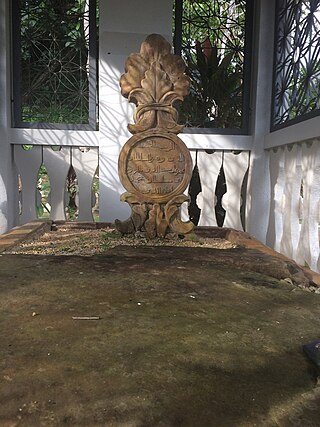
Omar Ali Saifuddin I ibni Muhammad Alauddin, also known as Al-Marhum Makam Besar, was the 18th Sultan of Brunei and the second son of Sultan Muhammad Alauddin. He was regarded as one of the longest-serving sultans and was renowned for his wise leadership and just rule, merely following his father-in-law, Sultan Hussin Kamaluddin. In fact, he received helpful knowledge, counsel, and experience from his father-in-law when he was still alive during his reigning period.

Ahmad Tajuddin Akhazul Khairi Waddien was the 27th Sultan of Brunei from 11 September 1924 until his death. After his death in 1950, he was then succeeded by his younger brother Omar Ali Saifuddien.
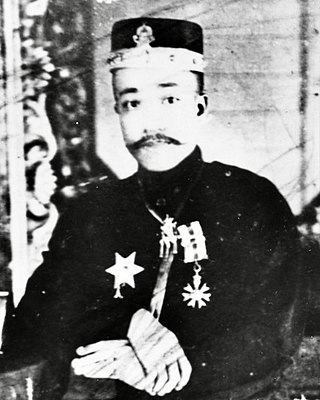
Muhammad Jamalul Alam II was the 26th Sultan of Brunei from 10 May 1906 until his death in 1924.
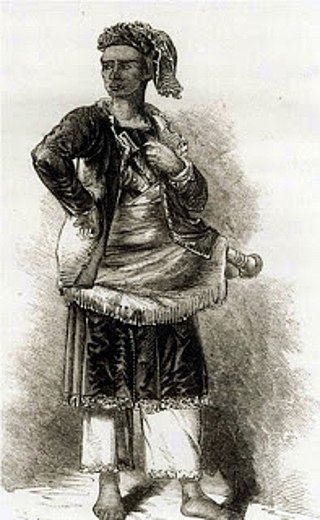
Abdul Momin was the 24th Sultan of Brunei from 1852 until his death in 1885.

Hashim Jalilul Alam Aqamaddin was the 25th Sultan of Brunei from 30 May 1885 to 10 May 1906.
Muhyiddin ibni Abdul Jalilul Akbar was the 14th Sultan of Brunei and the fourth son of Sultan Abdul Jalilul Akbar. He took the throne after defeating his opponent, Sultan Abdul Hakkul Mubin during the Brunei Civil War. Notably, he also attempted to return the throne back to the origin bloodline via Sultan Muhammad Ali's family.

Muhammad Hasan ibni Saiful Rijal Nurul Alam, also known as Marhum di Tanjung, was the 9th Sultan of Brunei from 1582 to 1598. Under him, the Empire of Brunei had apparently full control of the island of Borneo and Northern Philippines, including Sulu.
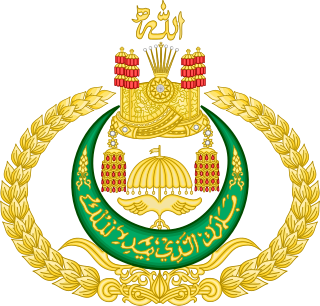
The House of Bolkiah is the ruling royal family of Brunei Darussalam. It is composed of the descendants of the 1st sultan Sultan Muhammad Shah and his family. The Sultan of Brunei is the head of state and absolute monarch of Brunei. He is also head of government in his capacity as Prime Minister.
Muhammad Ali ibni Muhammad Hasan, also known as Marhum Tumbang Di Rumput, was the 12th Sultan of Brunei. His murder would later go on to spark the beginning of the Brunei Civil War between his killer and Sultan Muhyiddin, which a protracted civil war of succession that broke out and lasted for several years.

Abdul Hakkul Mubin ibni Muhammad Panjang, also known as Abdul Mubin or Al-Marhum di Pulau, was the 13th Sultan of Brunei. He was involved in the Brunei Civil War and ruled the sultanate from 1660 to 1673, after killing his uncle, Sultan Muhammad Ali.

The Royal Brunei Mausoleum is a Royal Mausoleum of Brunei located at Jalan Tutong, Bandar Seri Begawan, Brunei. The Mausoleum is the main resting place and burial ground for several Sultans of Brunei and members of the Royal Family. The Royal Mausoleum was opened during the reign of Sultan Omar Ali Saifuddin I who later became the first monarch to be buried in the Mausoleum when he died in 1795.

Pengiran Anak Mohammad Alam OBE was a nobleman and politician whom became the fourth Speaker of the Brunei Legislative Council, serving from 14 July 1971 until 30 November 1974. He was the father of Pengiran Anak Saleha, the queen consort of Hassanal Bolkiah, the current Sultan of Brunei. He was also the uncle and father-in-law of the Sultan. He was also a maternal grandfather of Al-Muhtadee Billah, the Crown Prince.

Cermin Island is an islet at the mouth of Brunei River in the Mukim Kota Batu, Brunei-Muara District, Brunei. During the Brunei Civil War, a battle unfolded on the island and it's sometimes referred to as the Peperangan Pulau Cermin. A proposal for an 5 hectares protection status to be implemented on the island. The island is home to sundry vegetation and swamp forests.
Muhammad Alam ibni Muhammad Kanzul Alam was the self-proclaimed 22nd Sultan of Brunei, then known as the Bruneian Empire. Due to his tough and strict attitude, he was nicknamed Raja Api and Raja Marak Berapi.

Pengiran Anak Damit was the Queen consort of Brunei as the wife of the 28th Sultan of Brunei, Omar Ali Saifuddien III.
Nasruddin ibni Besar Abdullah, sometimes spelled Nassaruddin and posthumously named Marhum di Kianggeh, was the self-proclaimed 15th Sultan of Brunei and the grandson of Sultan Abdul Jalilul Akbar. It was under his reign that the first gold coins or pitis were introduced, with the name Nasiruddin Malik al Zahir.
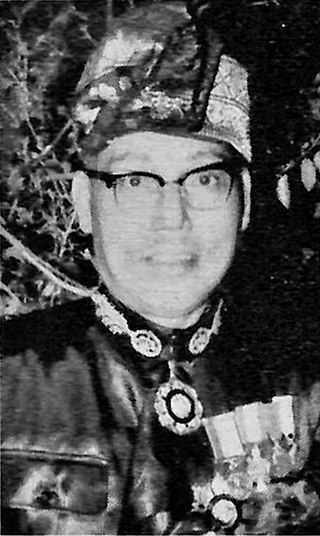
Pengiran Muda Hashim, also simply referred to as P. M. Hashim, was a Bruneian nobleman and politician who formerly held several high-ranking positions which included being a member of the Privy Council, Legislative Council, and the Islamic Religious Council.
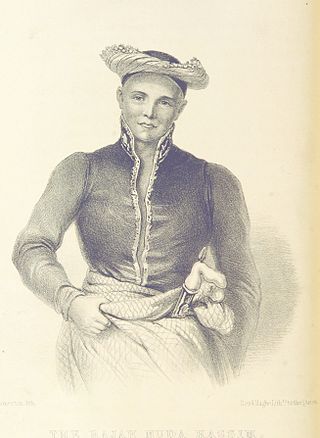
Pengiran Mohammad Salleh (1790s–1858) or commonly referred to by his title Pengiran Indera Mahkota, was a Bruneian nobleman and politician whom served as the Governor of Sarawak in 1827. In the region that is now part of Sarawak, he founded the city of Kuching in 1827.
Prince Hashim of Brunei or commonly referred to by his title Pengiran Muda Hashim and Raja Muda Hashim, was a Bruneian prince whom was the son of Sultan Muhammad Kanzul Alam, and uncle to Sultan Omar Ali Saifuddin II.

















